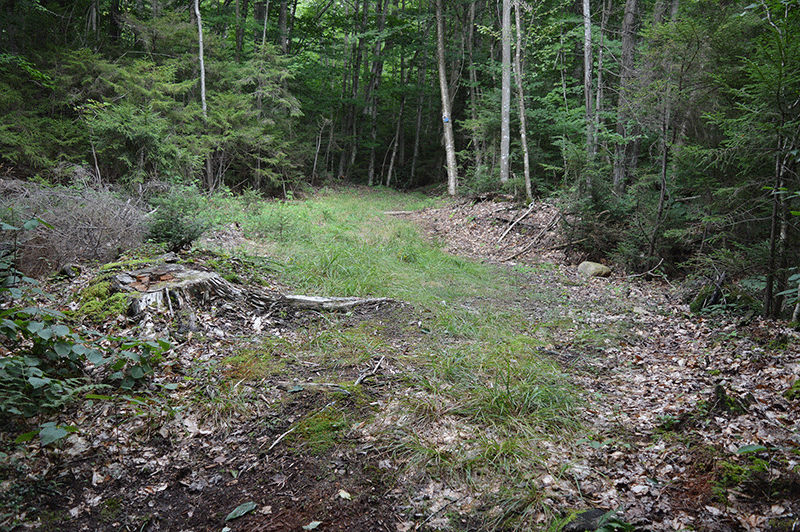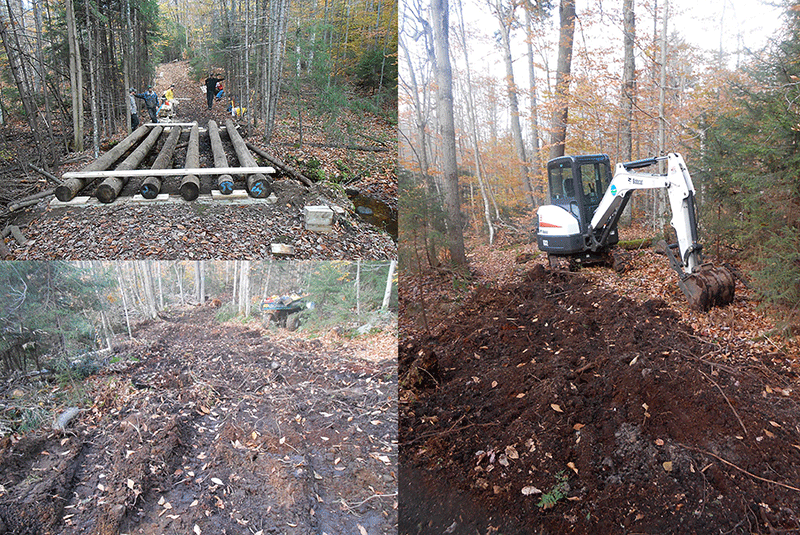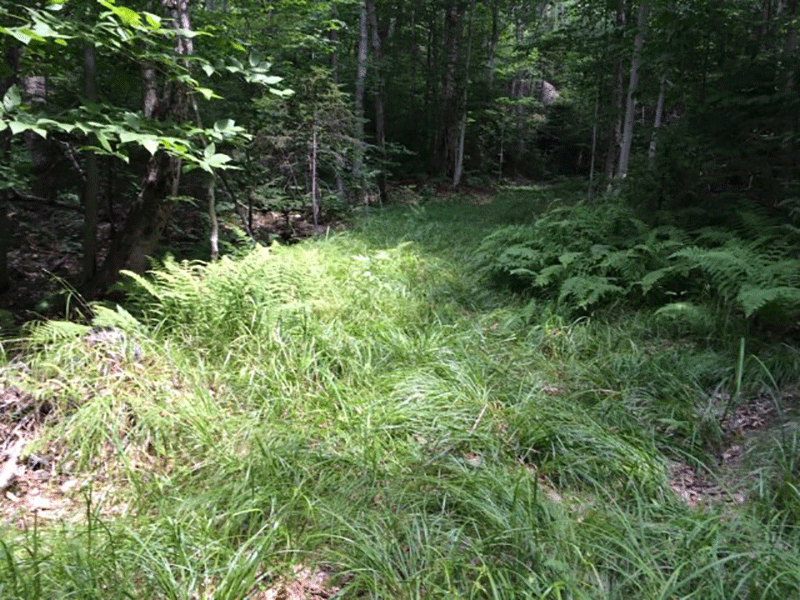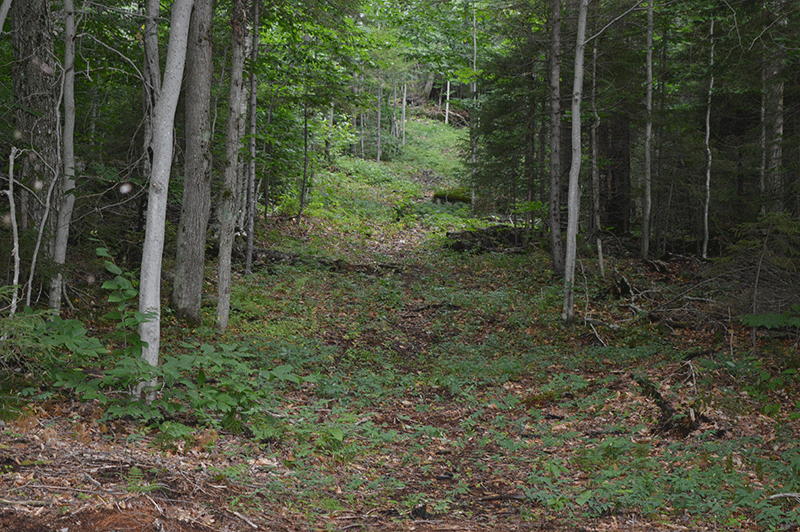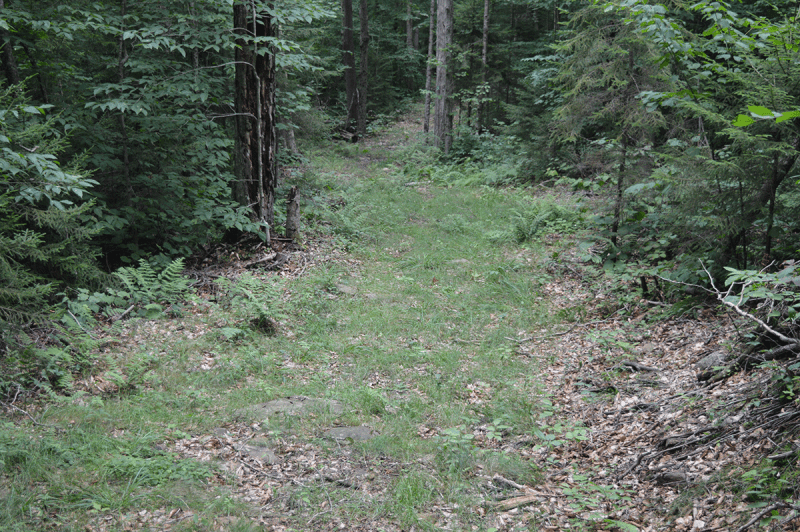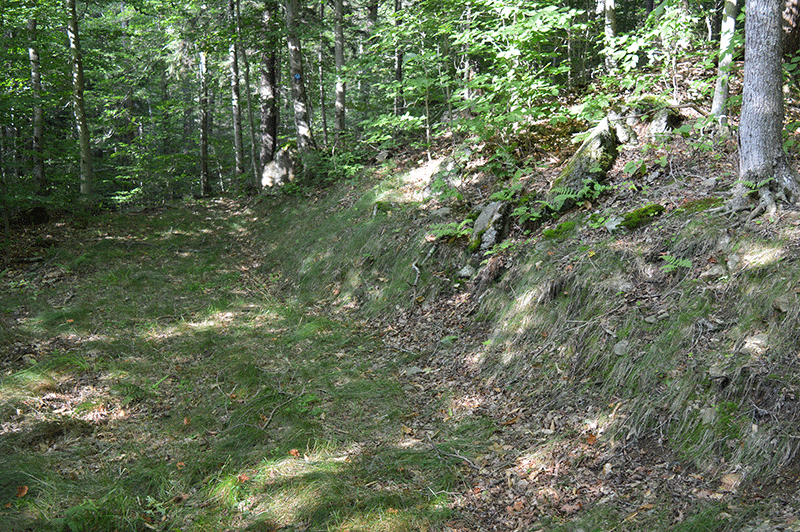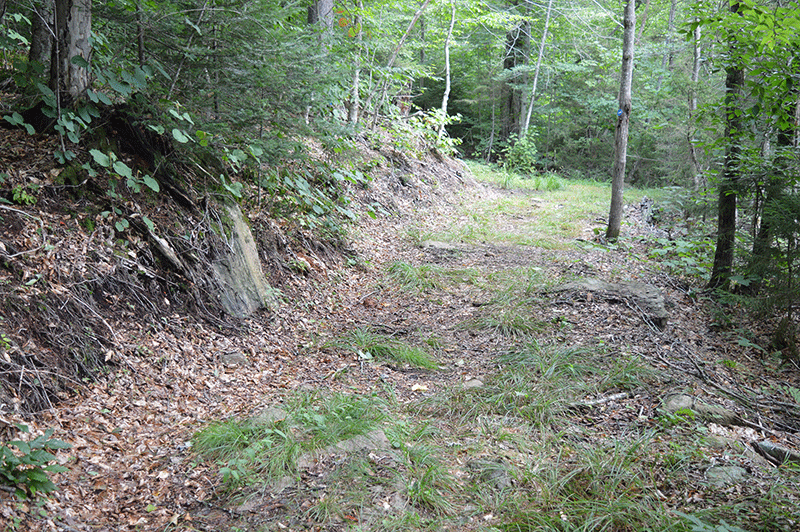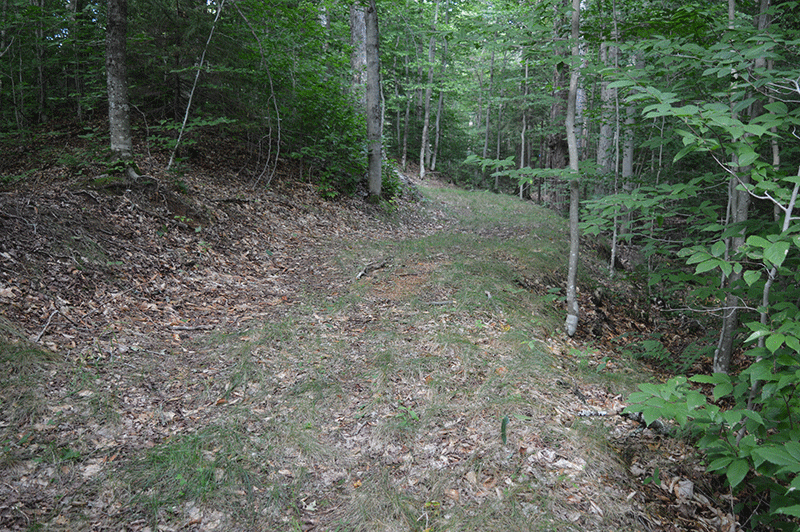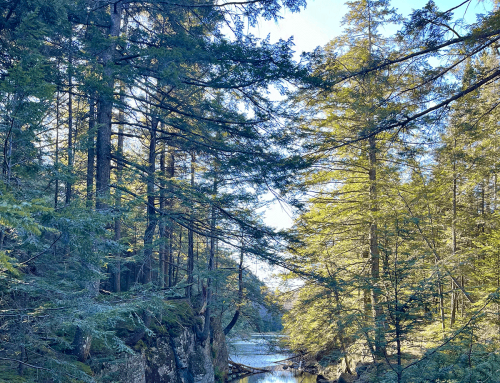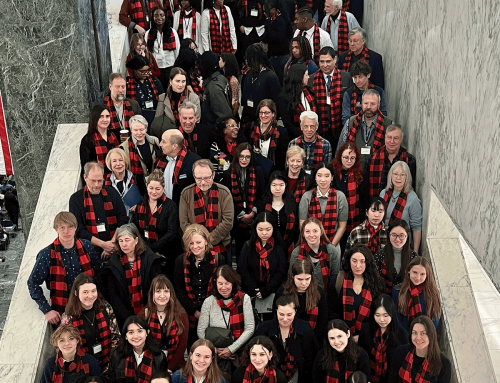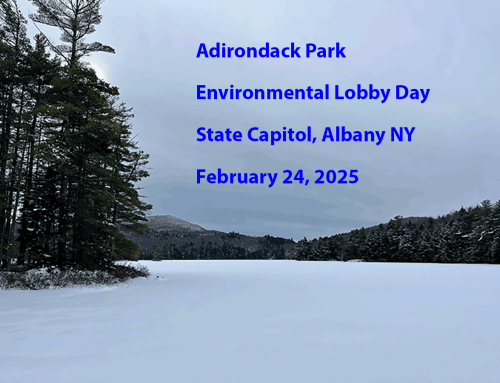The first 20 miles of Class II Community Connector Snowmobile Trails that were constructed by the Department of Environmental Conservation (DEC) and Adirondack Park Agency (APA) caused substantial damage to the Adirondack Forest Preserve. Class II trails were struck down by New York’s highest court for violating the forever wild clause of the State Constitution. Over 25,000 trees were cut down, or marked for cutting, and over 20 miles of trails were fully cut out, much of which was graded with heavy machinery to create wide, flat trail corridors. These first Class II trails were then planted with grass making them long grassy corridors that snake through the intact forest of the public Forest Preserve.
The DEC and APA approved dozens of new Class II trails in recent years. The Class II snowmobile trail is a fundamentally different kind of “trail” in the Forest Preserve. Over 27 miles, DEC cut nearly 1,000 trees per mile, measured at a width of 1” diameter at breast height (DBH) or greater. They are designed to be 9-12 feet wide, but are often wider on slopes and turns. They require extensive “bench cutting” where cleared widths can reach 20 feet. The trail surface is graded with heavy machinery, removing rocks and roots so that the trail surface is uniform and flat.
Protect the Adirondacks has called on the DEC and APA to restore these damaged parts of the Forest Preserve back their prior state. Below is a series of pictures that show the particular damage caused by the construction of Class II trails.
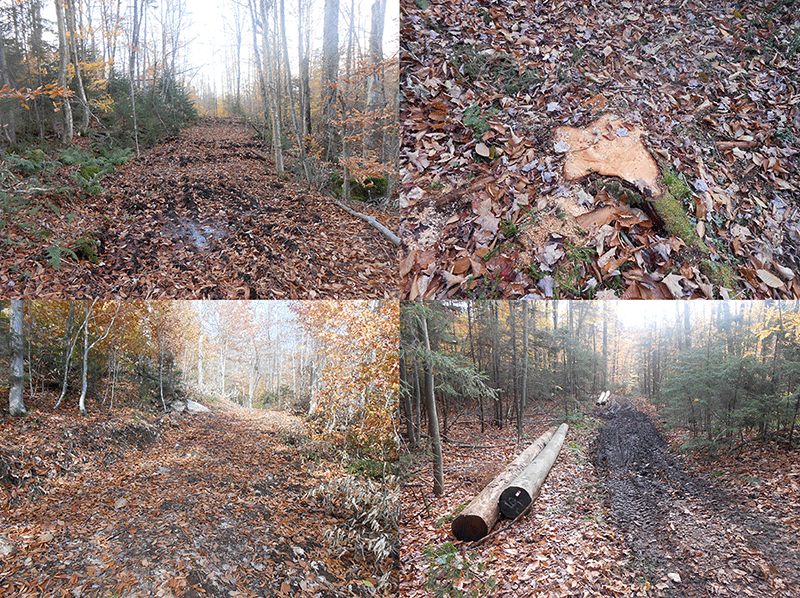
Class II Trails are built using very different equipment and techniques than a standard foot trail. They saw cutting of nearly 1,000 trees per mile and forest clearing of one acre for every trail mile. They were built using heavy machinery to grade and flatten the trail surface. Class II Trails saw extensive use of “bench cutting” on the sides of trails that extended the width of a damaged trail corridor to 15-20 feet in many areas. Bridges are built with large telephone-pole-like poles that can support the weight of a multi-ton tracked groomer. The scenes above are from the construction of the 12-mile-long Seventh Lake Mountain Trail in the Moose River Plains Wild Forest Area.
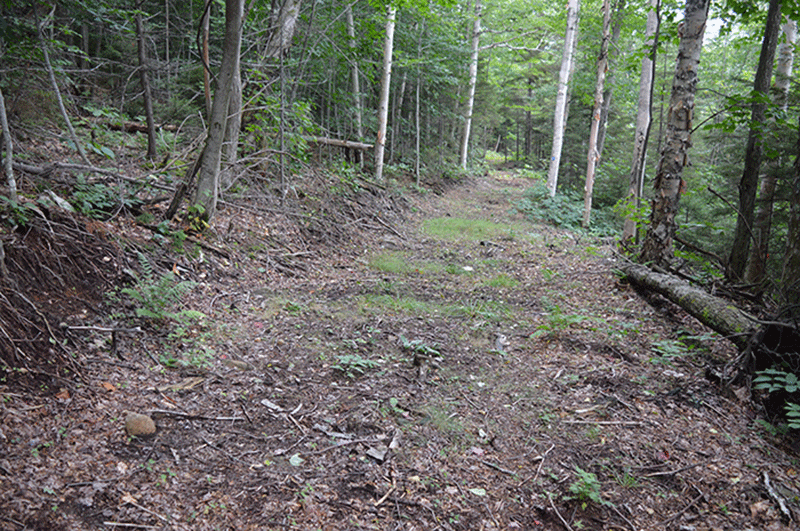
This picture shows a Class II trail that was built as a long straight away so that snowmobiles could reach faster speeds. Note that this is a long bench cut with disturbed and damaged areas on both the upslope and downslope of the wide trail tread. This section of trail has been graded with heavy machinery.

Class II trails require over-sized bridges that are over 12 feet wide and can support the weight of a multi-ton wide tracked groomer. These bridges are often equipped with plastic reflectors.
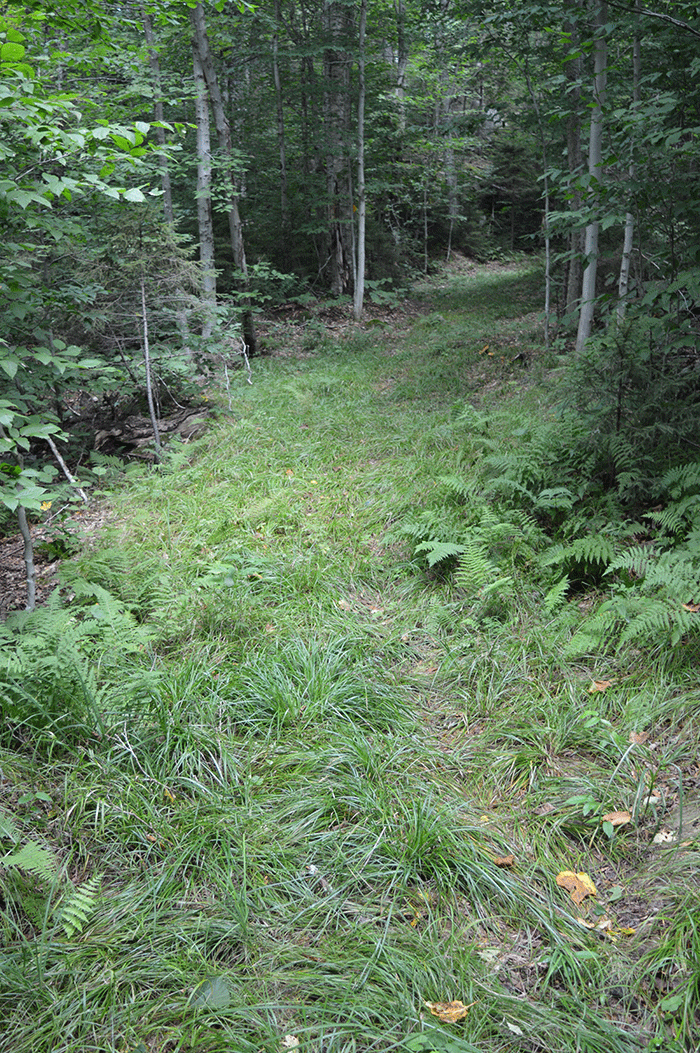
Class II trails become grassy corridors through the forest, which completely change the forest character and ecology.
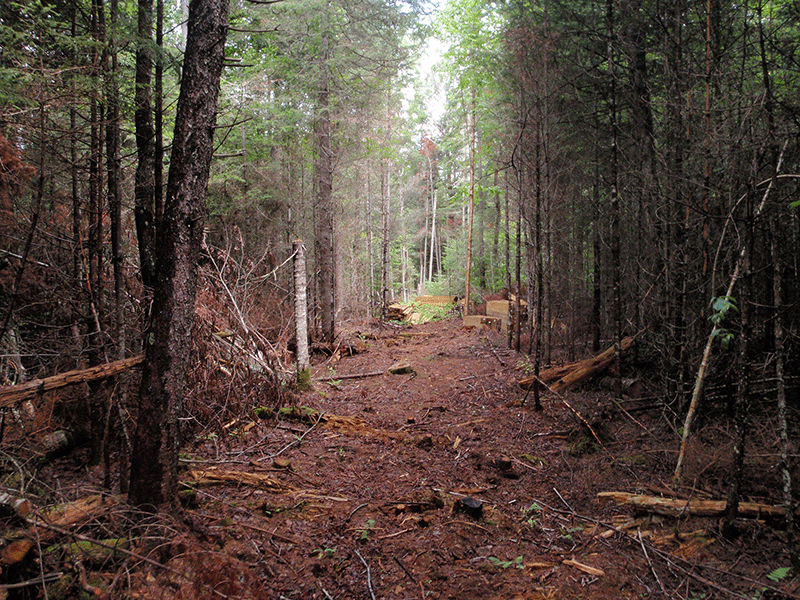
In many sections of Class II trails supplies were stockpiled and remained unused as trail construction was halted by a restraining order in 2016. These materials must be removed from the Forest Preserve.
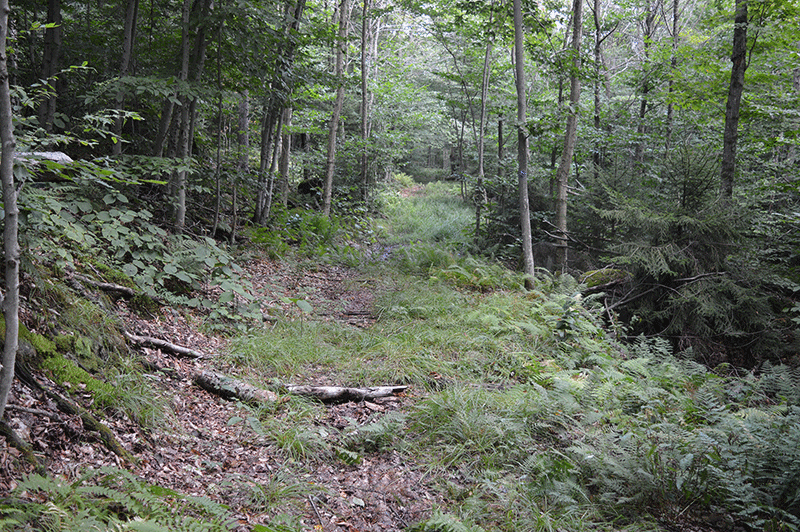
The pictures above show more scenes of damaged Class II Trails in the Forest Preserve. These trails need to be restored.

